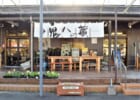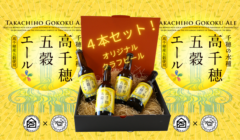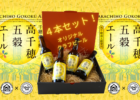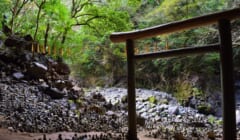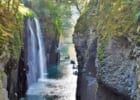

The sacred site of the Descent from the Heavens – A walking guide to mythological and historic landmarks
- 0 お気に入り
- 1612 view
- お気に入り登録

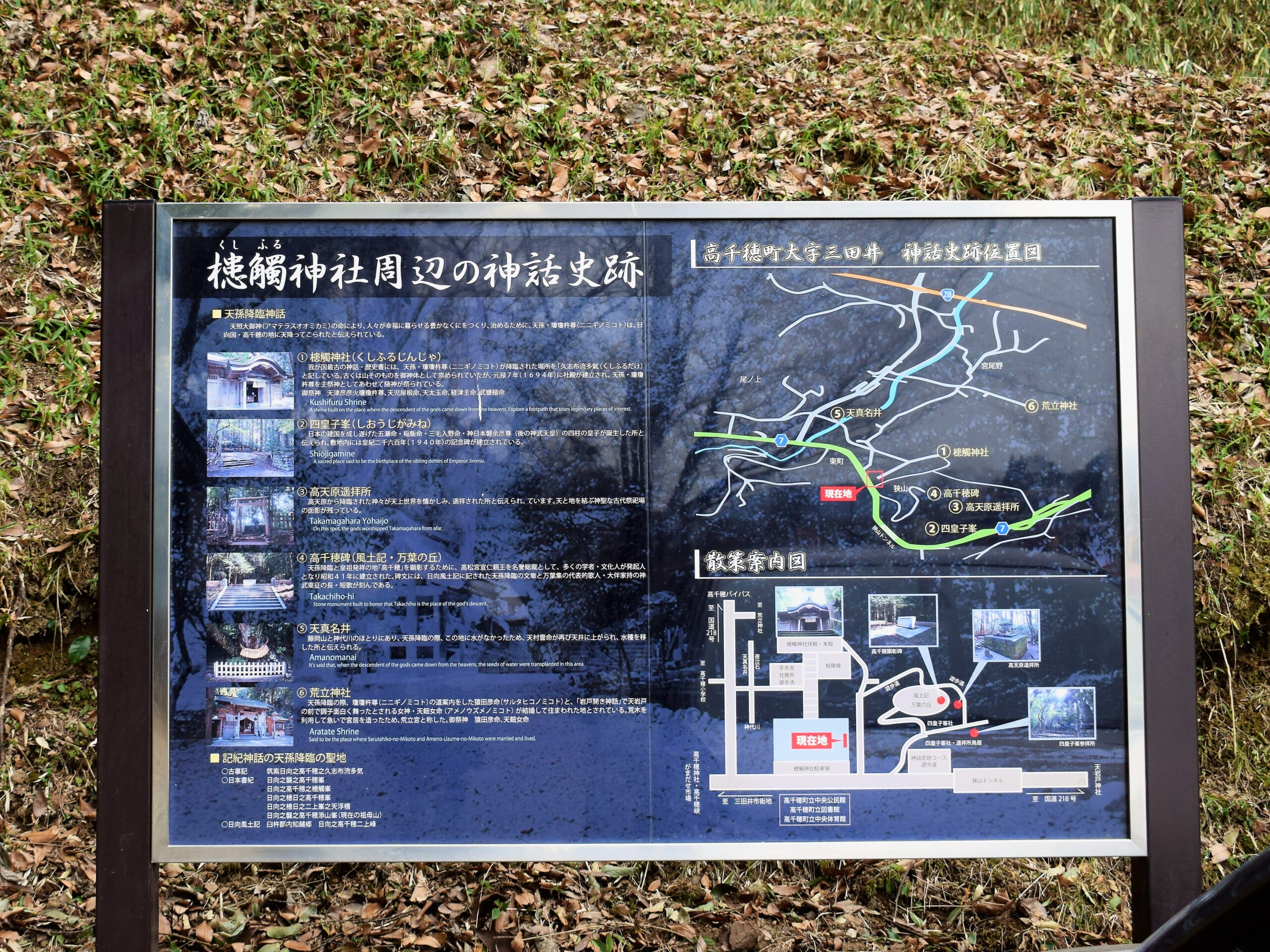
Kushifuru Peak is said to be the site in which the Tenson Korin, “The Descent from the Heavens” took place. The scene is described in the Kojiki (Japan’s oldest extant chronicle and collection of myths) as, “The heavens descend to Kushifurutake in Takachiho, in Himuka of Chikushi.”
Here, we will be introducing you to the sights along the “Mythological and Historical Site Walking Course,” which takes you around the historical landmarks related to the Tenson Korin myth of Kushifuru Peak.
You will see an information sign in the parking lot in front of the torii gates of Kushifuru Shrine. Next to it, you will find a pamphlet—created by locals—with directions to take you around the historical landmarks, as well as an explanation on the carvings on the Inner Shrine of Kushifuru Shrine. We recommend you grab one of these pamphlets before you set off.
★Click here for directions to “Kushifuru Shrine”!
https://maps.app.goo.gl/N9c9AA7fW3rcLkiF6
Start at Kushifuru Shrine, which enshrines the god of Tenson Korin
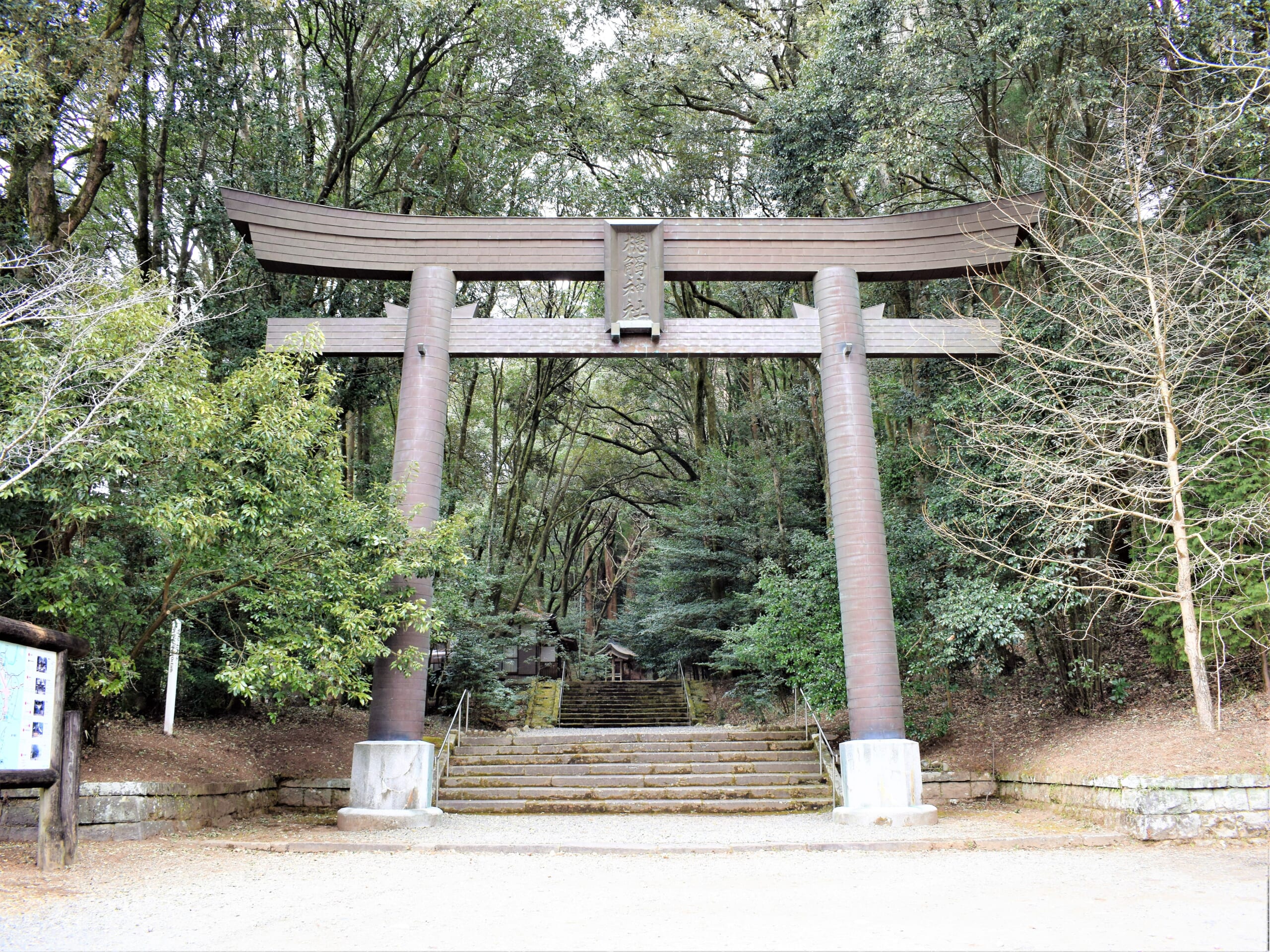
Kushifuru Shrine is located on the way from central Takachiho Town to Amano-Iwato, on Prefectural Road No. 50. It is about a 15-minute walk or three-minute drive away from Takachiho Shrine. It’s a nice walk if you are not traveling by car.
The first thing you should do is make your greetings to the gods.
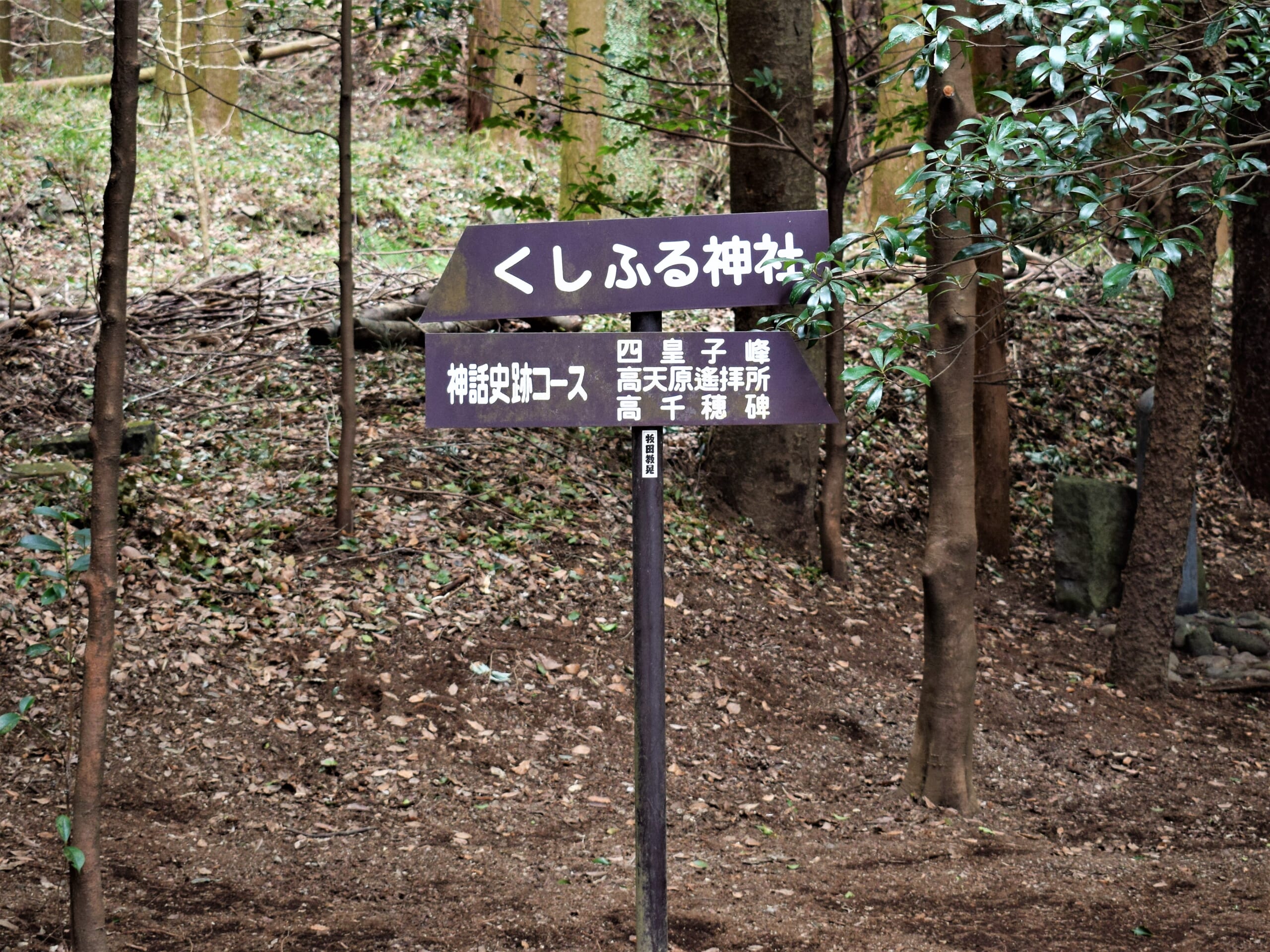
There are direction signs located at each key point along the walking course. Follow these as you move along.
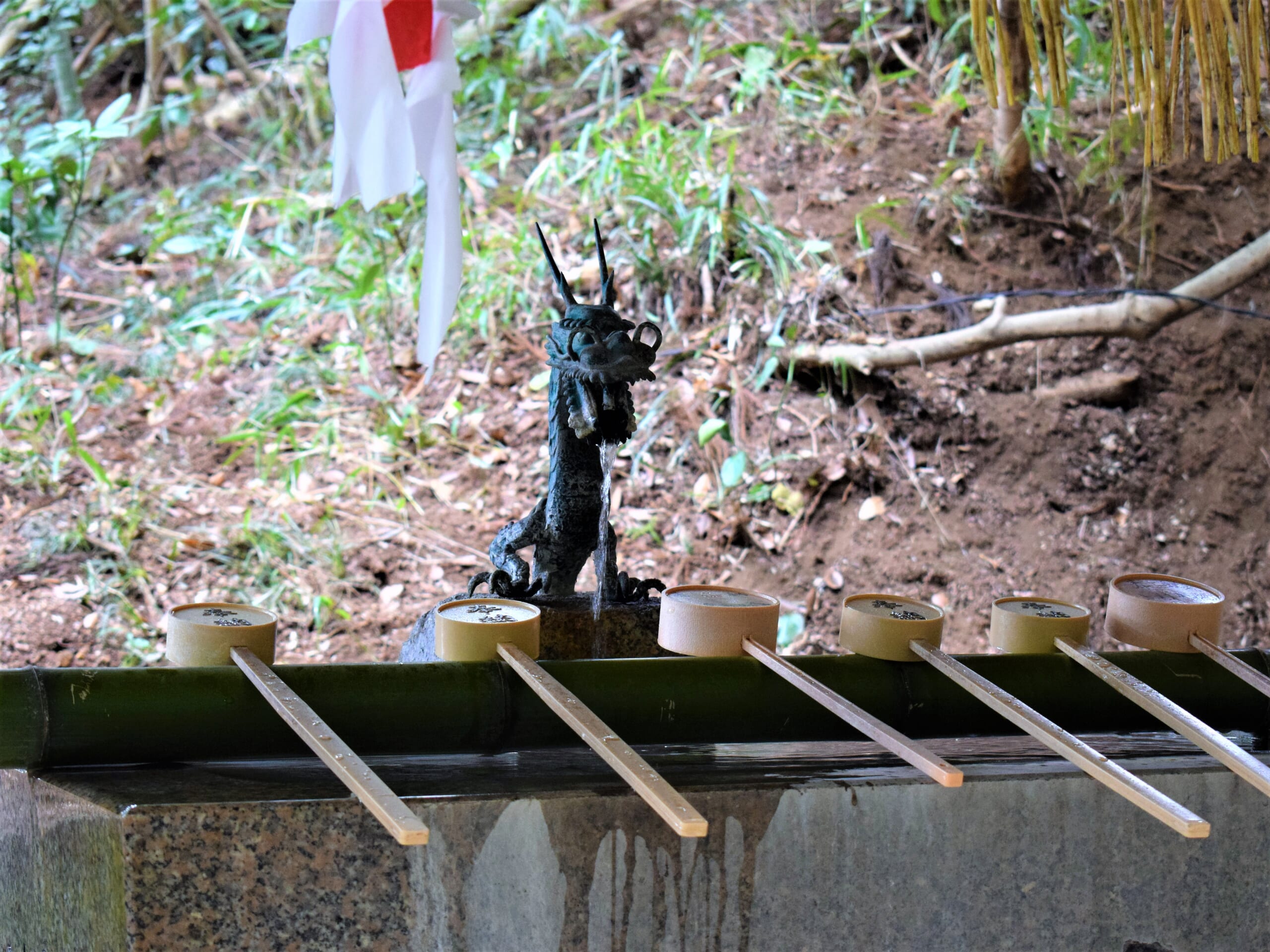
Before making your greetings, purify yourself both physically and mentally at the chozuya (Shinto water ablution pavilion).
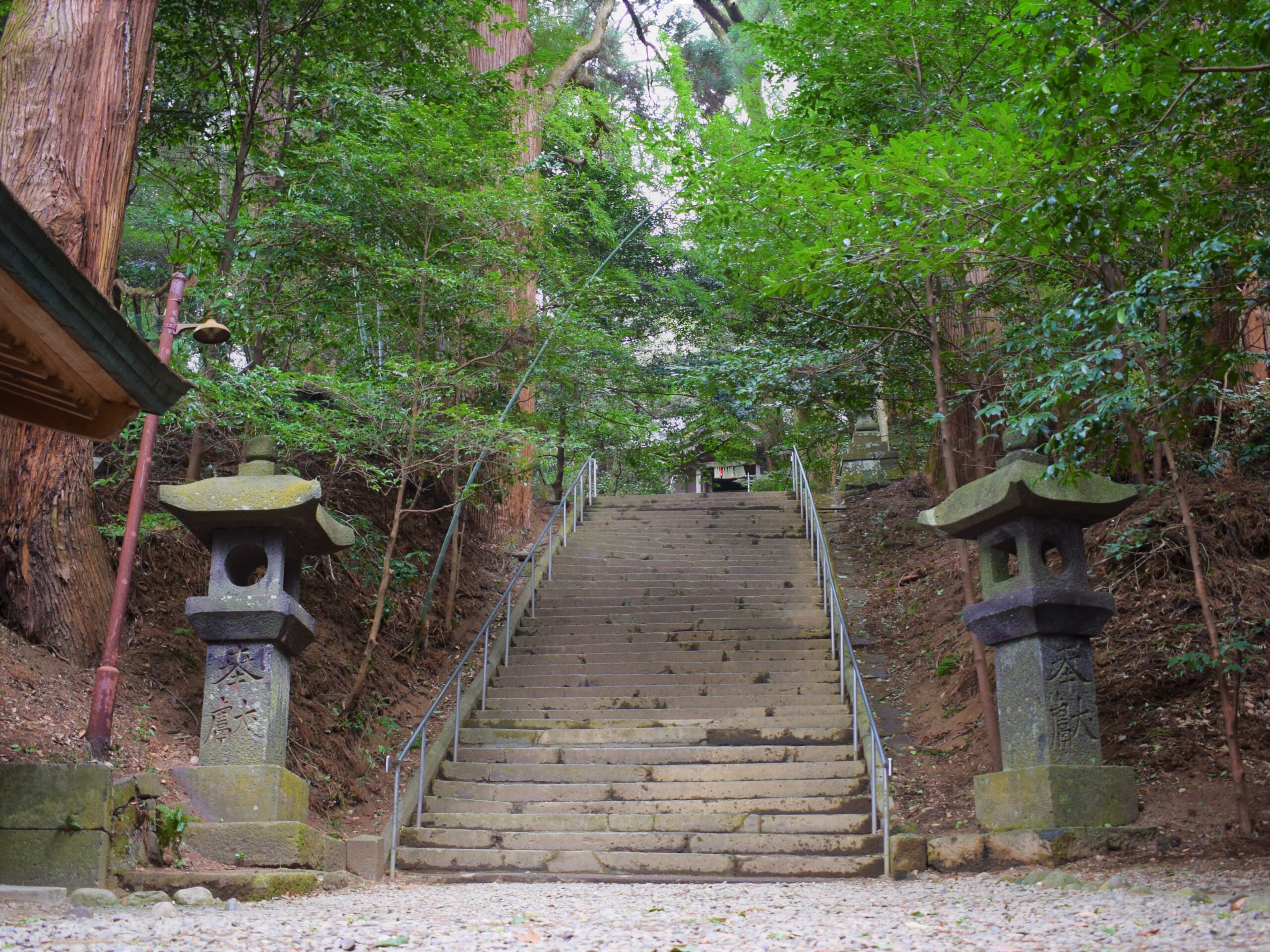
The long staircase leading up to the shrine is surrounded by trees. As you take each step, one by one, you will find yourself feeling more tense and focused.
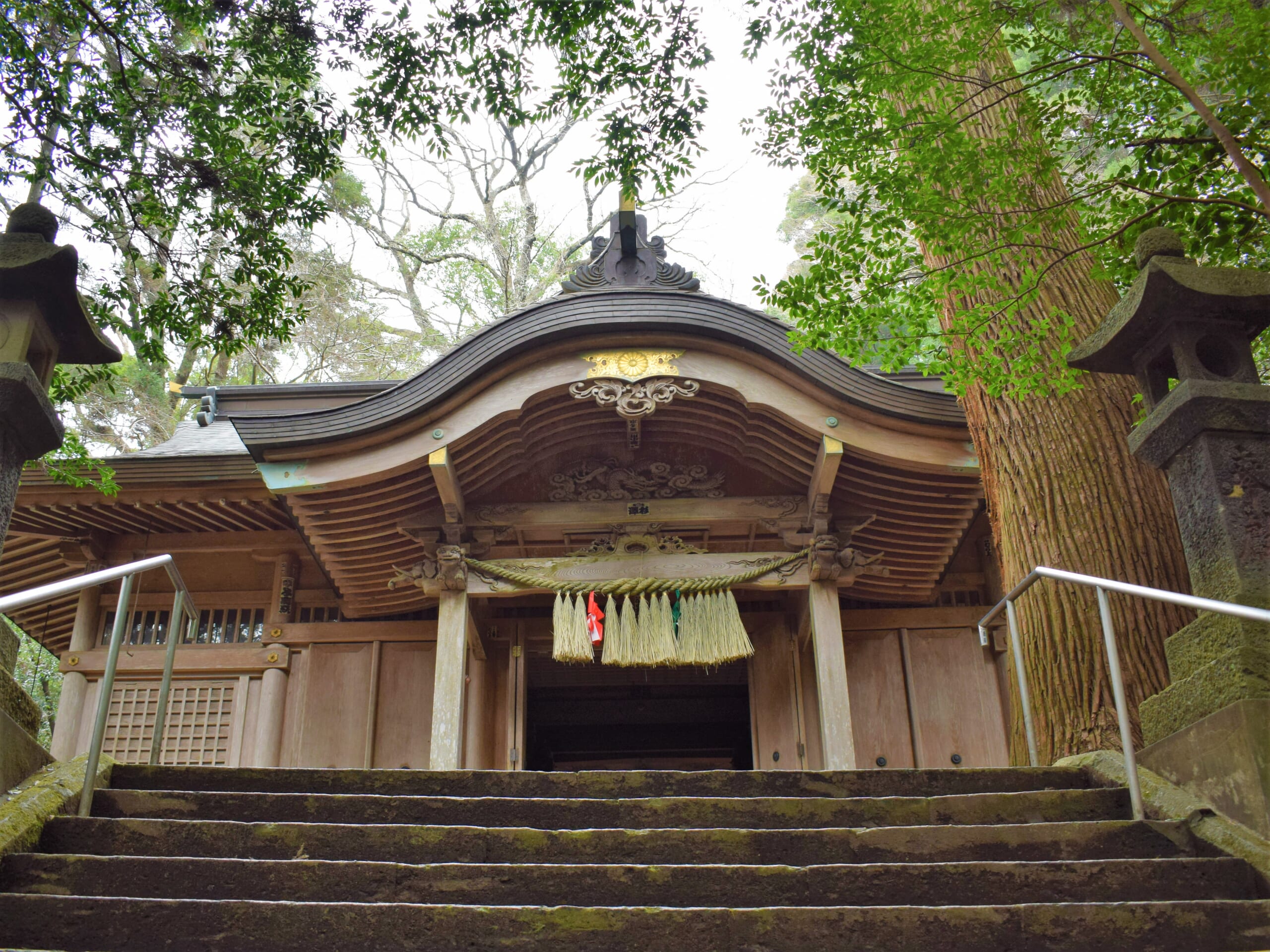
Kushifuru Shrine is dedicated to Kushifuru Peak, which is said to have been where the gods descended to earth from the heavens. As such, the power of the place is tangible.
Enshrined here are Ninigi-no-Mikoto – the grandson of the sun goddess Amaterasu-Omikami, as well as Amenokoyane-no-Mikoto, Amenofutotama-no-Mikoto, Futsunushi-no-Mikoto and Takemikazuchi-no-Mikoto.

When you are done praying, make your way around the Kushifuru Inner Shrine and have a look at the carvings on the building.
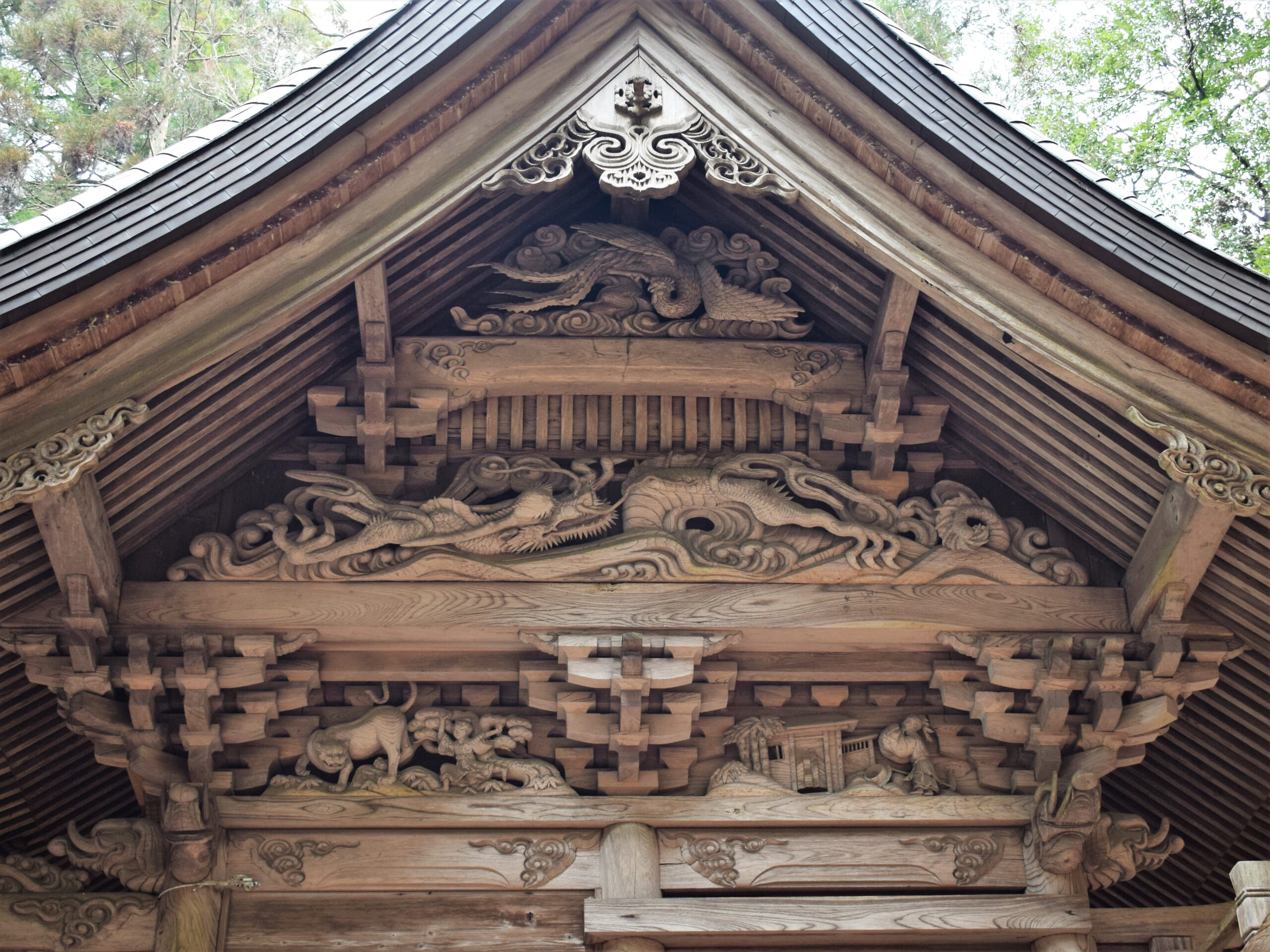
The tsumakazari (gable) and kaerumata (frog-leg struts) are decorated with carvings of the Chinese phoenix and the ascending and descending dragons, as well as figures from the ancient Chinese text, The Twenty-Four Filial Exemplars.
These carvings were made in 1694, which makes them over 300 years old. The meticulous detail of the carvings are breathtakingly beautiful and well worth a visit!
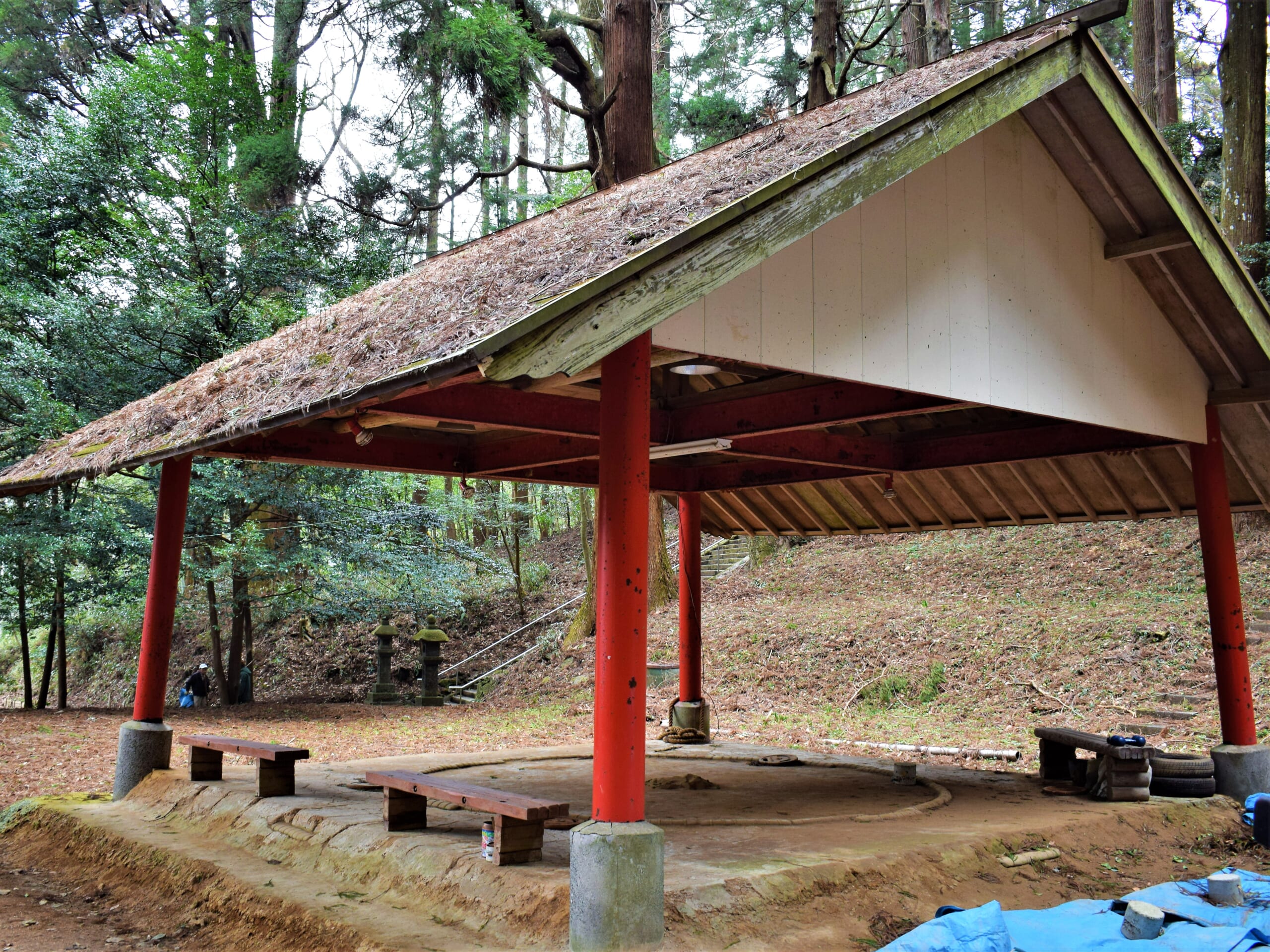
Walk down the path on the right side of the Kushifuru Shrine grounds, and you will see a sumo wrestling ring to your right.
Sumo is said to have originated as a contest of physical strength between Takemikazuchi-no-Mikoto and Tateminakata-no-Mikoto at the time of Tenson Korin. Nowadays, a ritual sumo match is held at the annual shrine festival as a means of divination for the year.
Takachiho Monument, inscribed with the lore of Takachiho Town
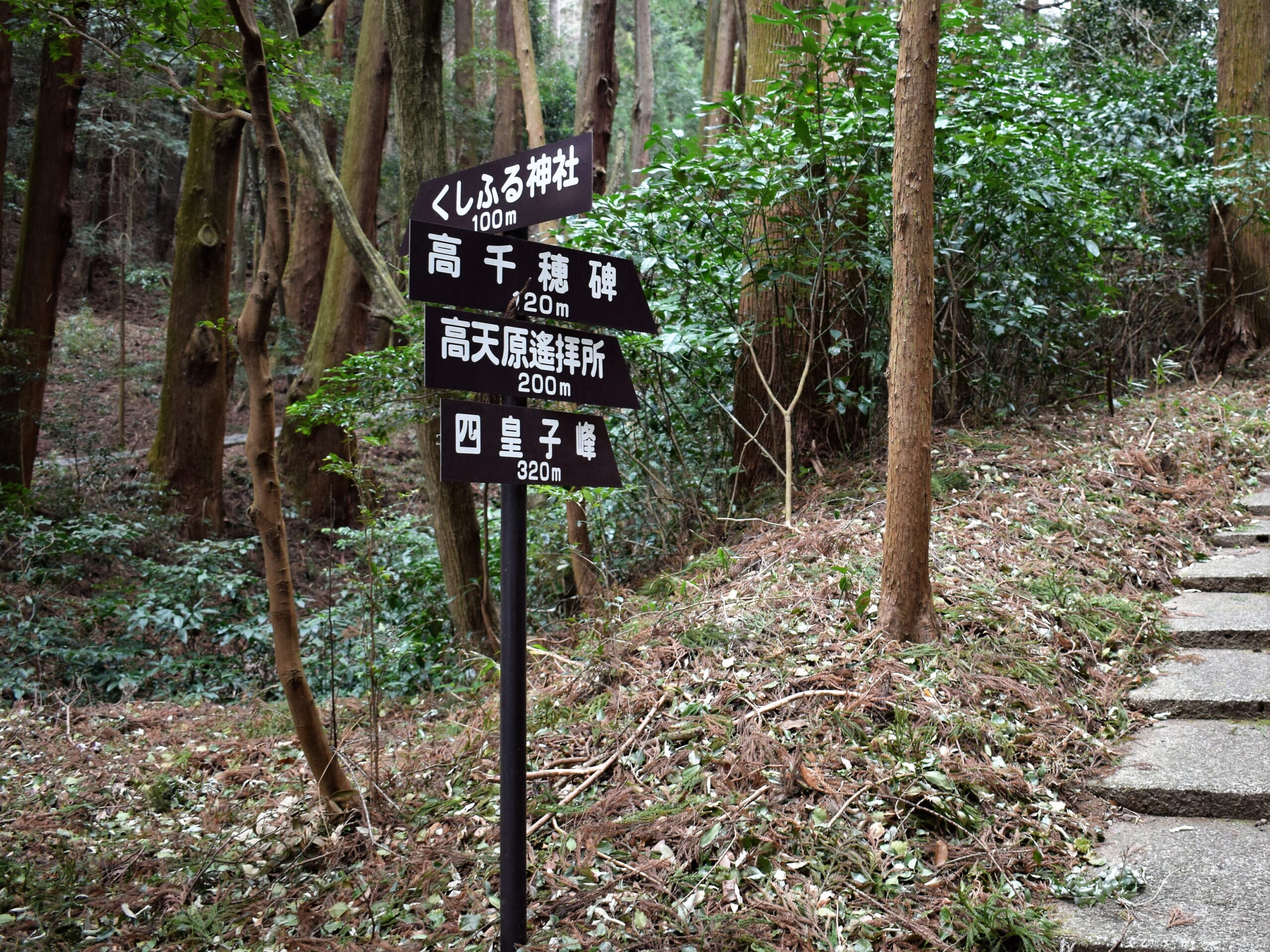
Walk along the promenade past the sumo wrestling ring, and you will come across a direction sign. Follow the directions on the sign to turn left, and head towards the Takachiho Monument.
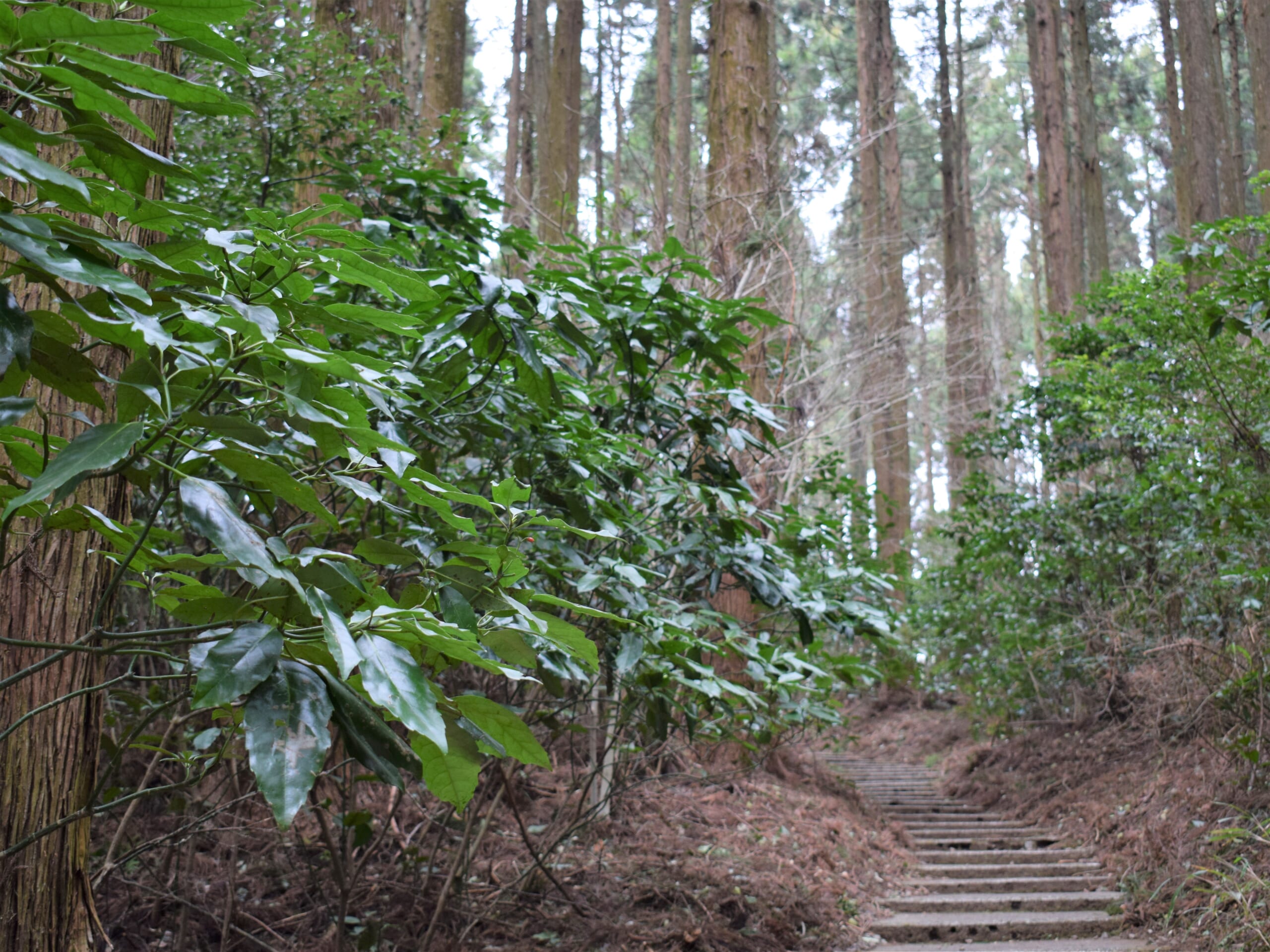
You must wear sneakers or walking shoes when walking this route, as some parts of the promenade can have you walking on mountain paths.
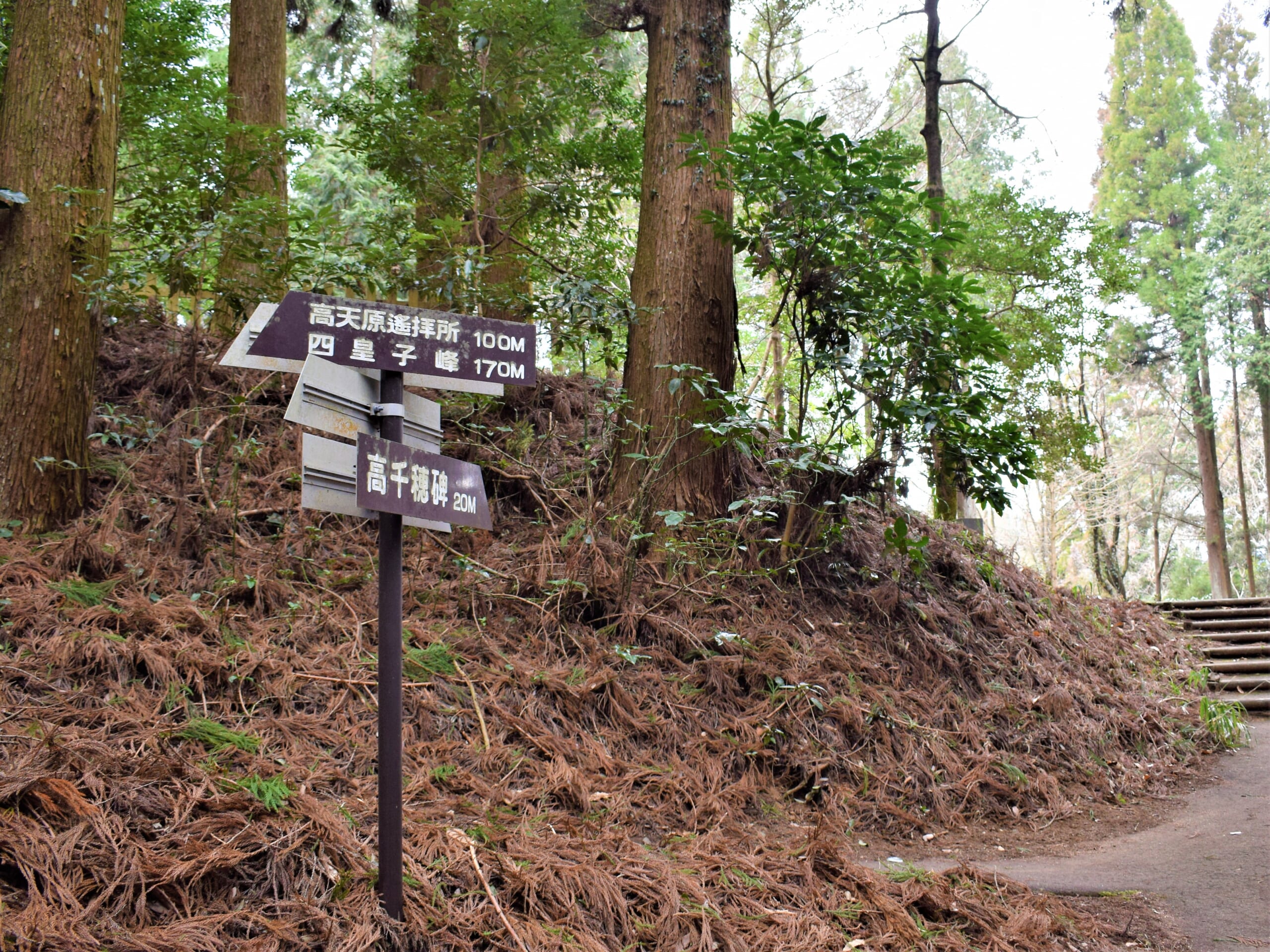
Look in the direction of Takachiho Monument as indicated by the direction sign, and you will see a plaza lit up by the sun.
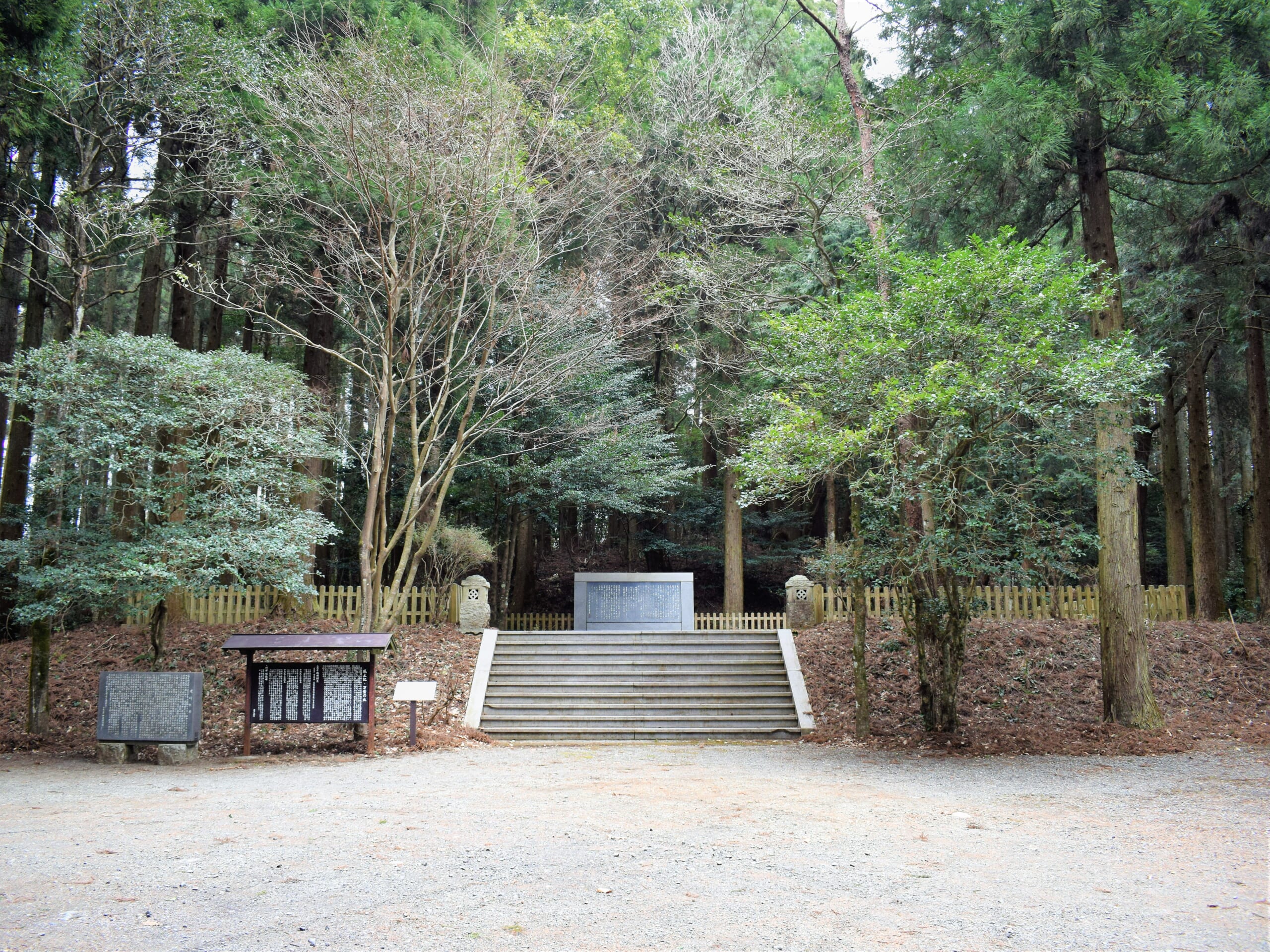
This serene area, lit by the sun, is called Manyo-no-Oka, and is where the Takachiho Monument is located.
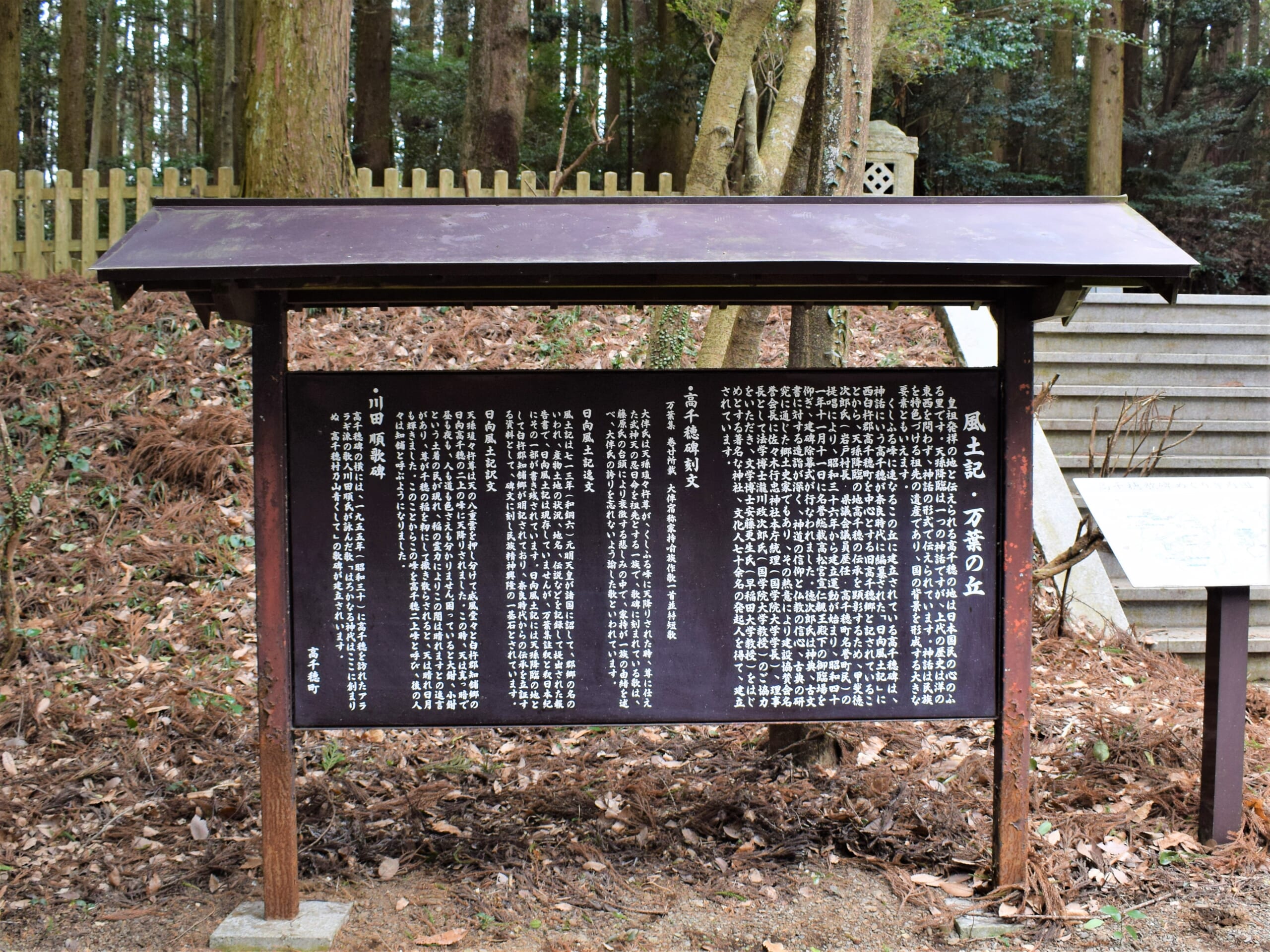
There is a description of the history behind the Takachiho Monument. The area is called Fudoki-Manyo-no-Oka because of its connection to the Hyuga Fudoki (Ancient Records of Southern Kyushu) and Manyoshu (Collection of Ten Thousand Leaves).
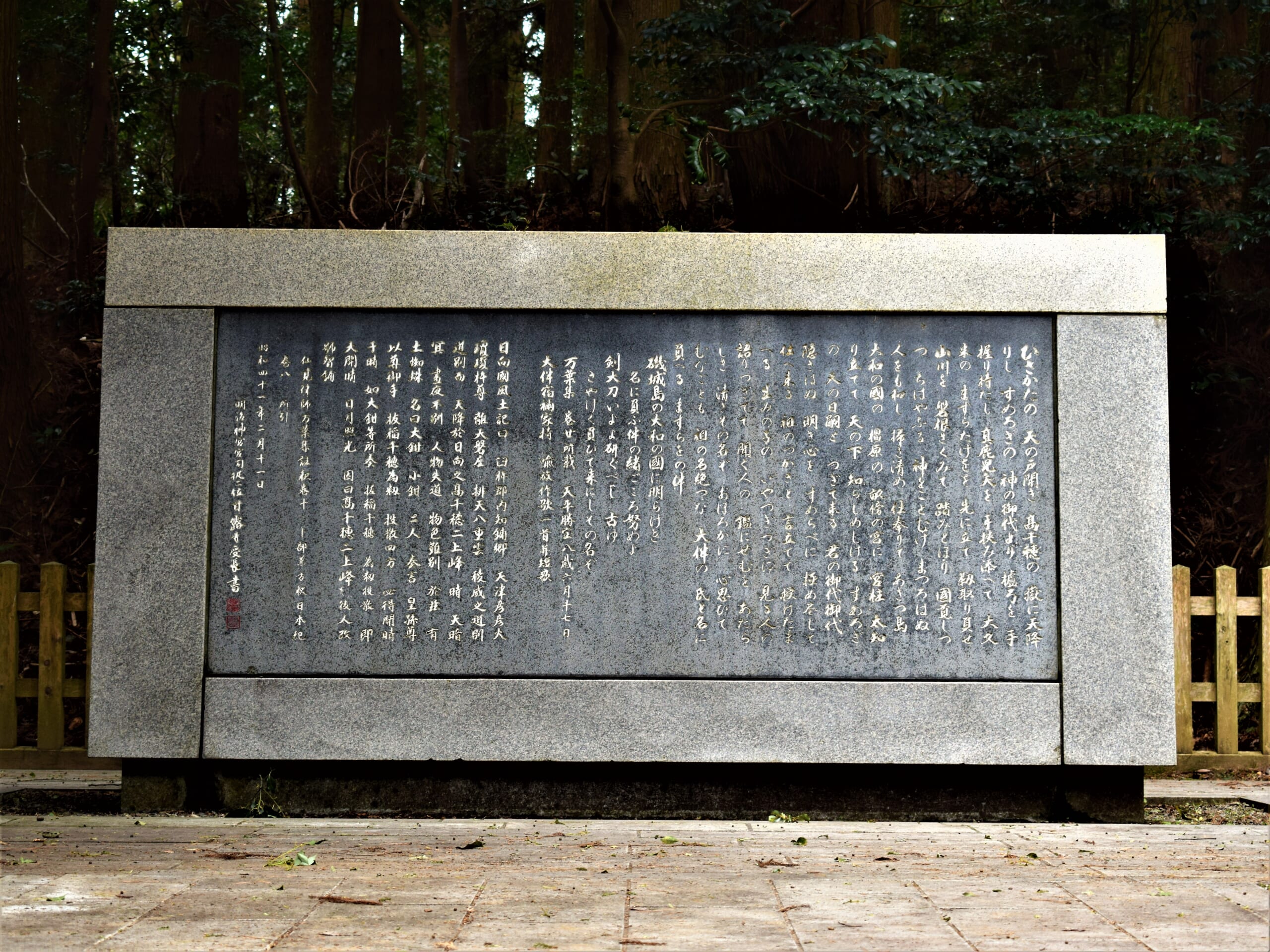
The stone monument is inscribed with the Hyuga Fudoki Itsubun which describes the Tenson Korin, and a choka (Japanese traditional epic poem) from the Manyoshu, left by Otomo-no-Yakamochi.
It gives a true glimpse into the history and mythology of the area.
Takamagahara – “The worship site of the Heavenly Realm”, a power spot that links the heavens to the earth
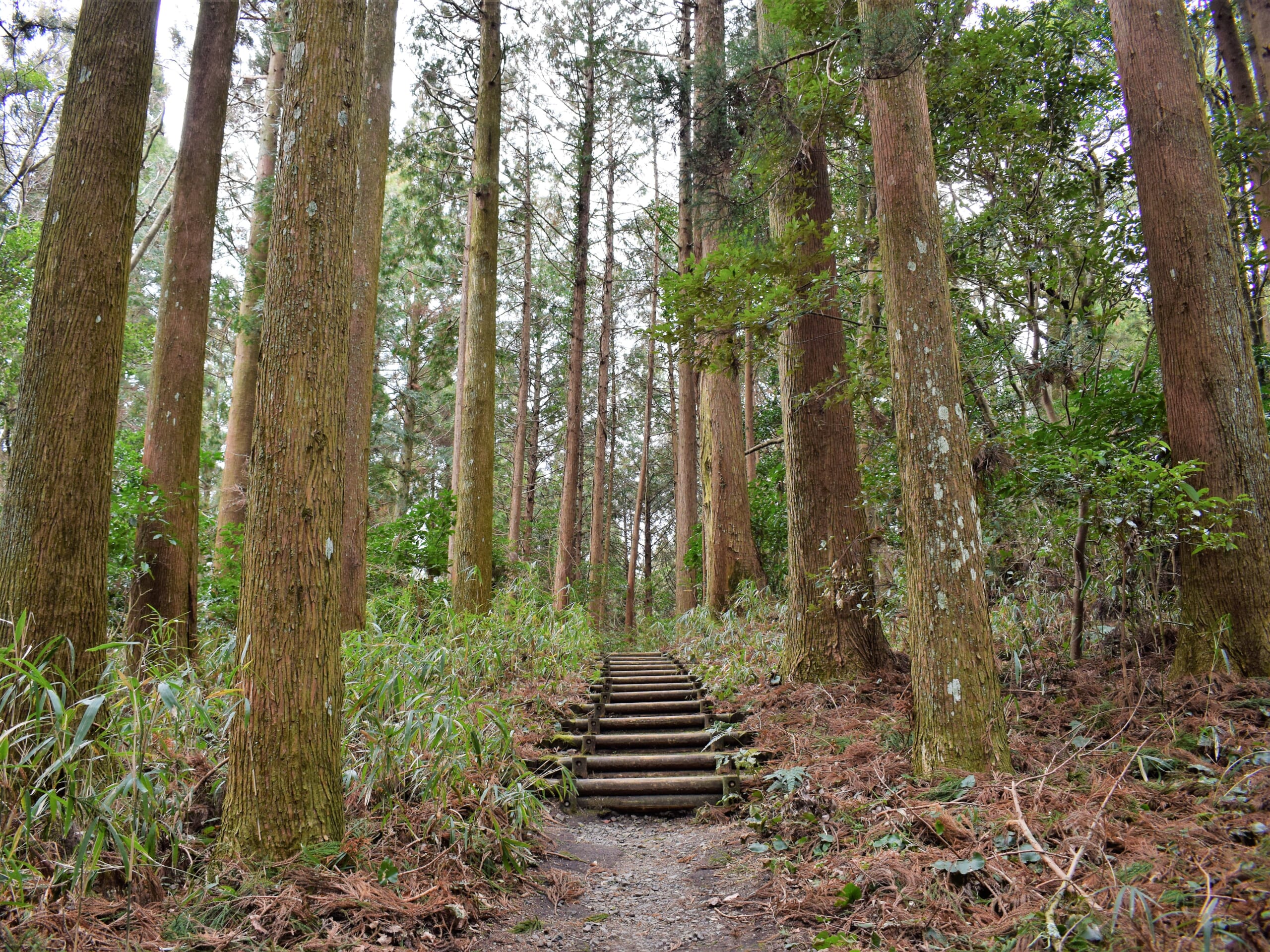
After leaving Manyo-no-Oka, go back a bit on the way you came, and follow the directions on the sign heading to the worship site of Takamagahara,”The worship site of the Heavenly Realm”.
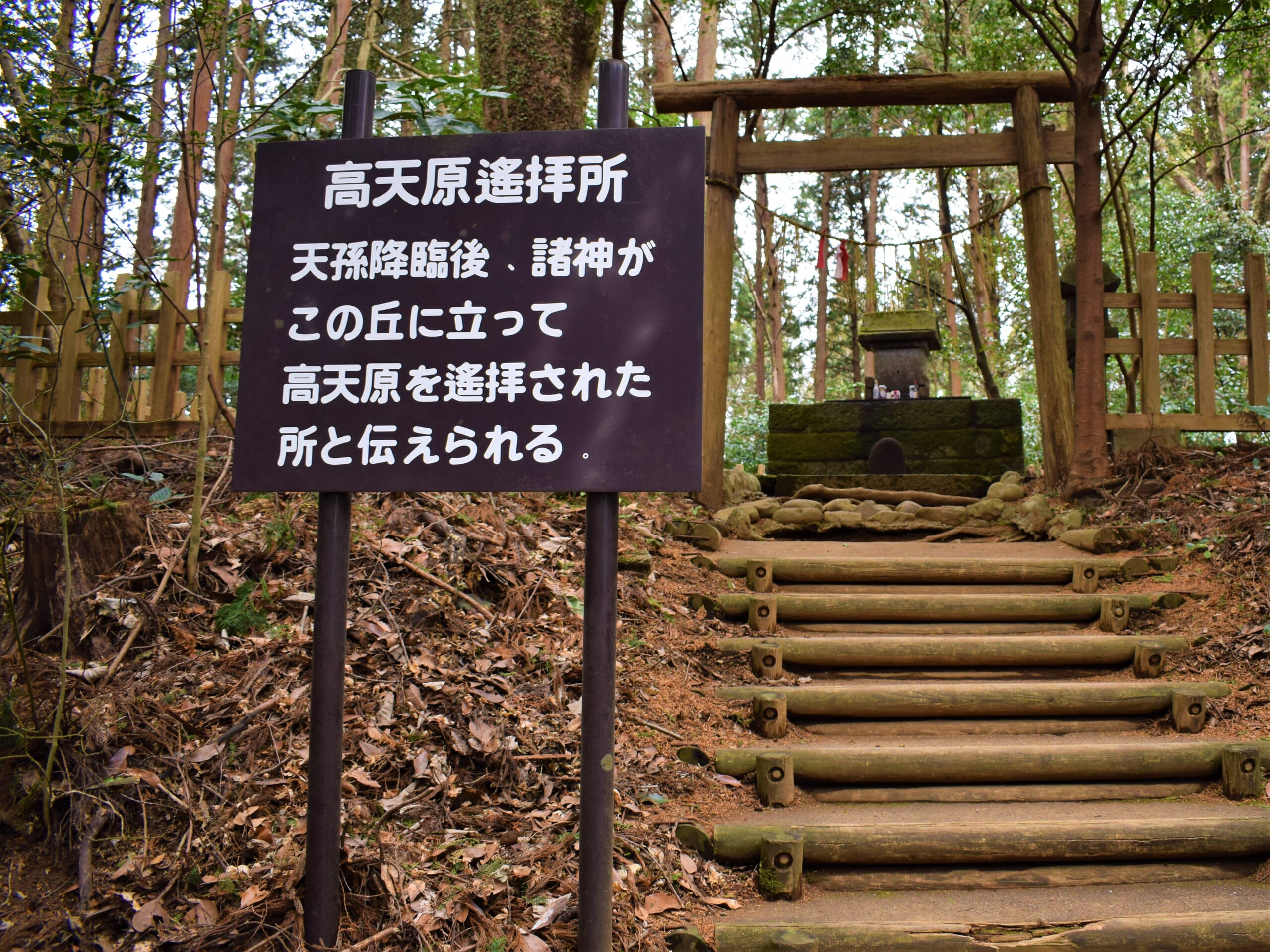
As you walk along the promenade, you will see an information sign to your right, and beyond it, a small torii gate and prayer hall. This is the worship site of Takamagahara.

It is said that the gods who descended from the heavens worshipped Takamagahara (the heavenly realm) from this site.
Takamagahara is the heavenly realm that was said to have existed before the creation of the earth, and is where the gods were born at the beginning of the Kojiki.
Shiojigamine – “Peak of the Four Imperial Sons”, the birthplace of the Emperor Jimmu
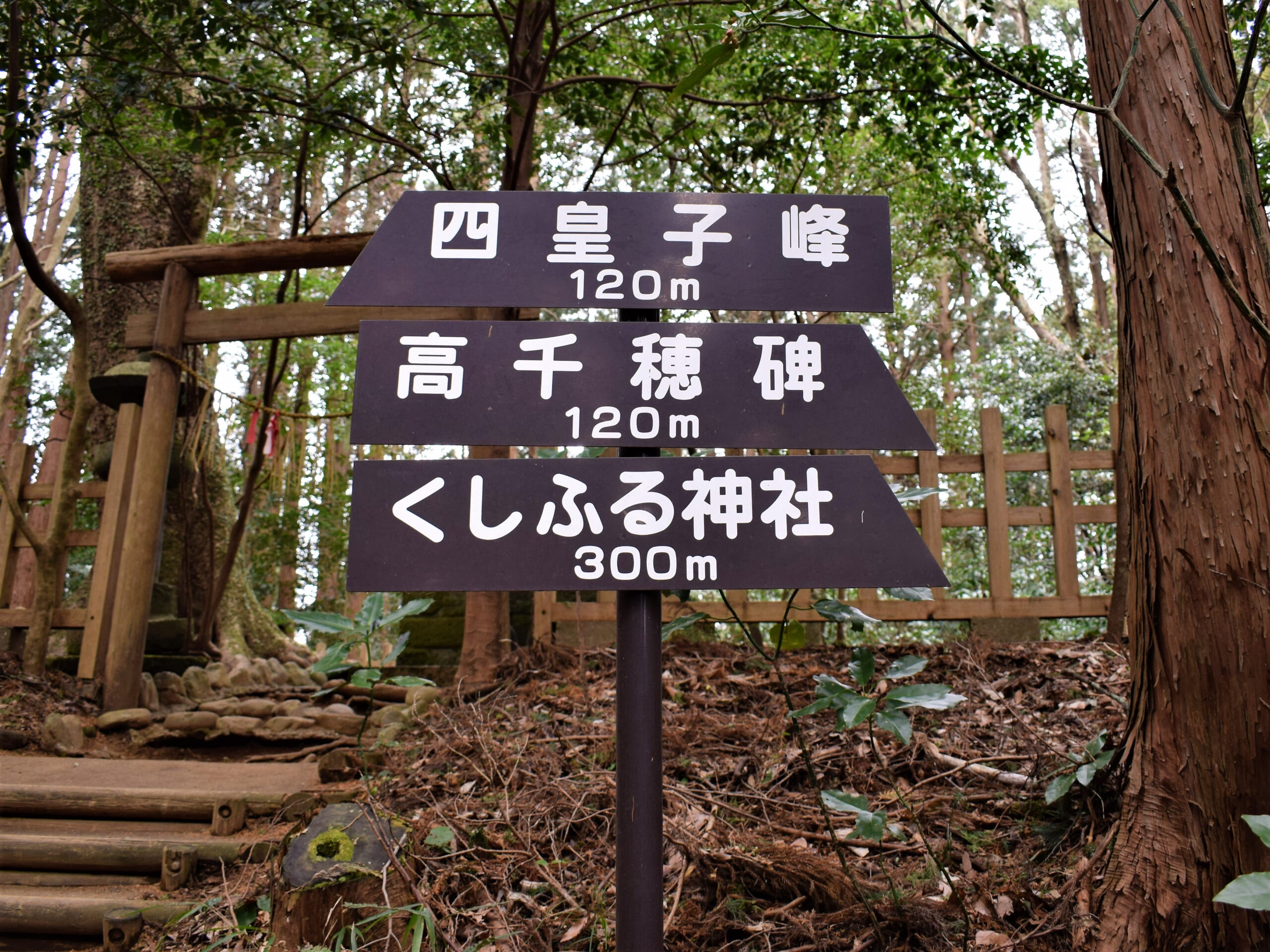
Follow the directions in front of Takamagahara and walk in the direction of Shiojigamine,”The Peak of the Four Imperial Sons”.
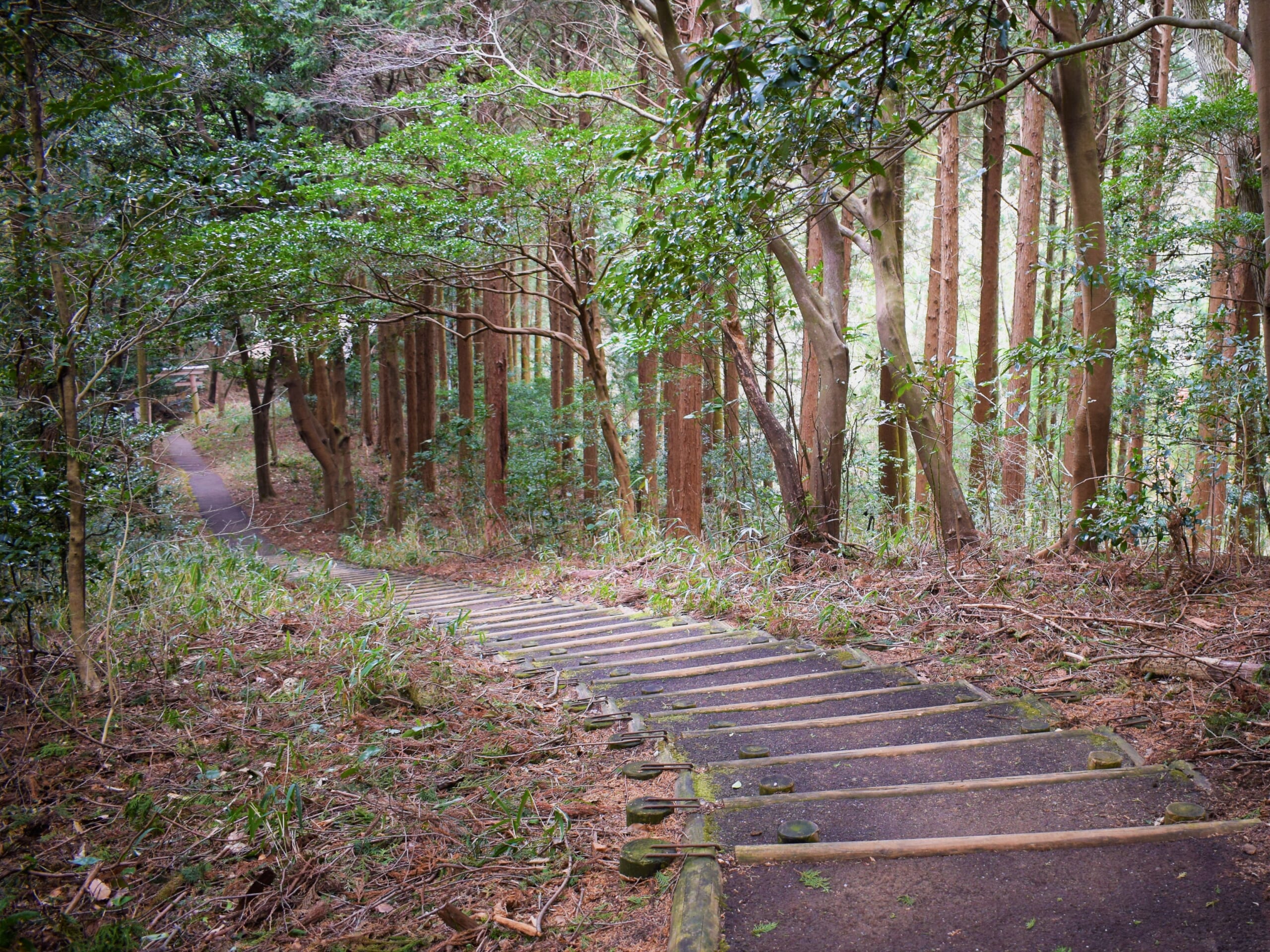
Listen to the rustling of the leaves and the chirping of the birds as you walk down the stairs of the promenade.
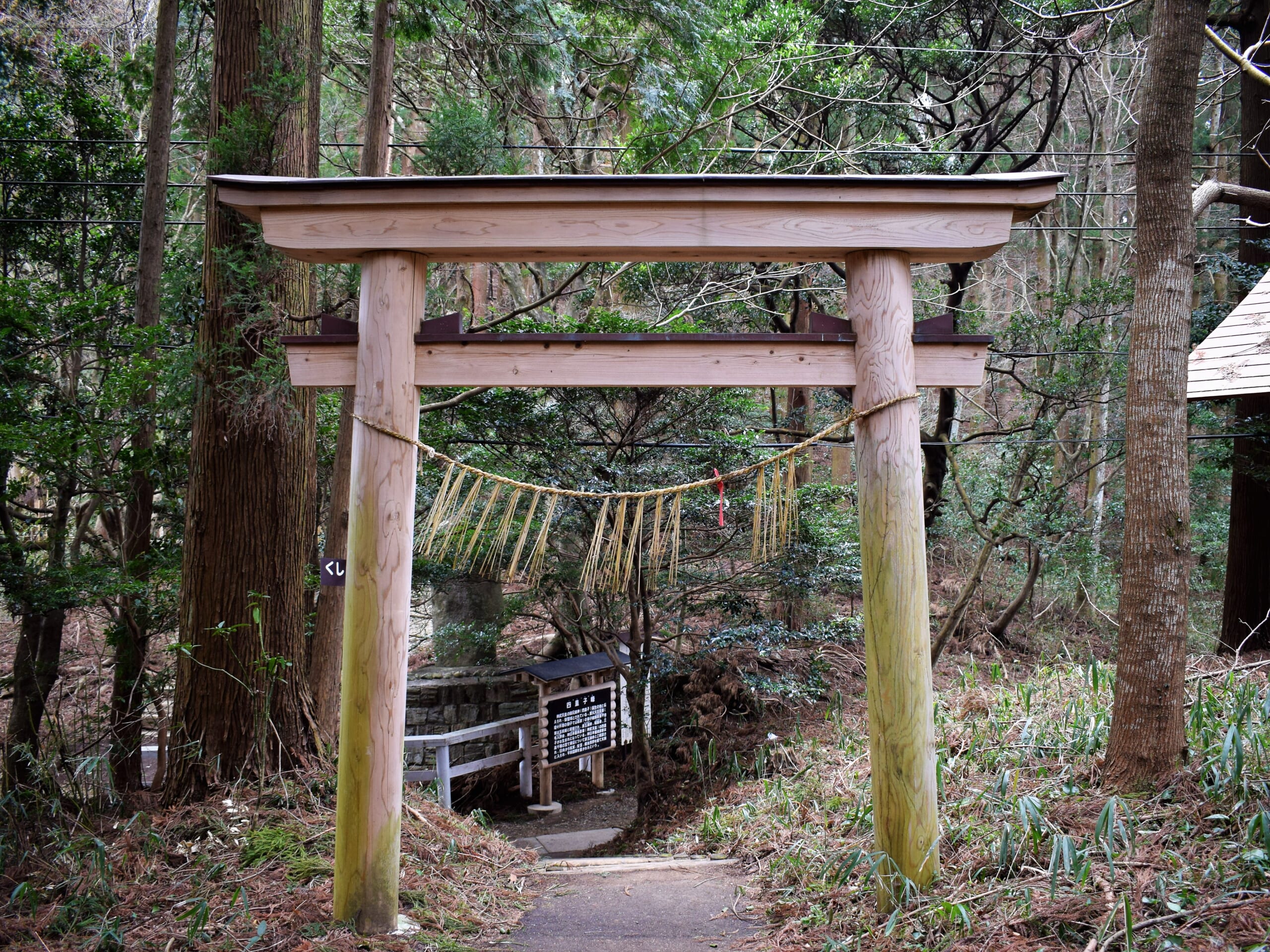
Past the bottom of the stairs you will see a torii gate.
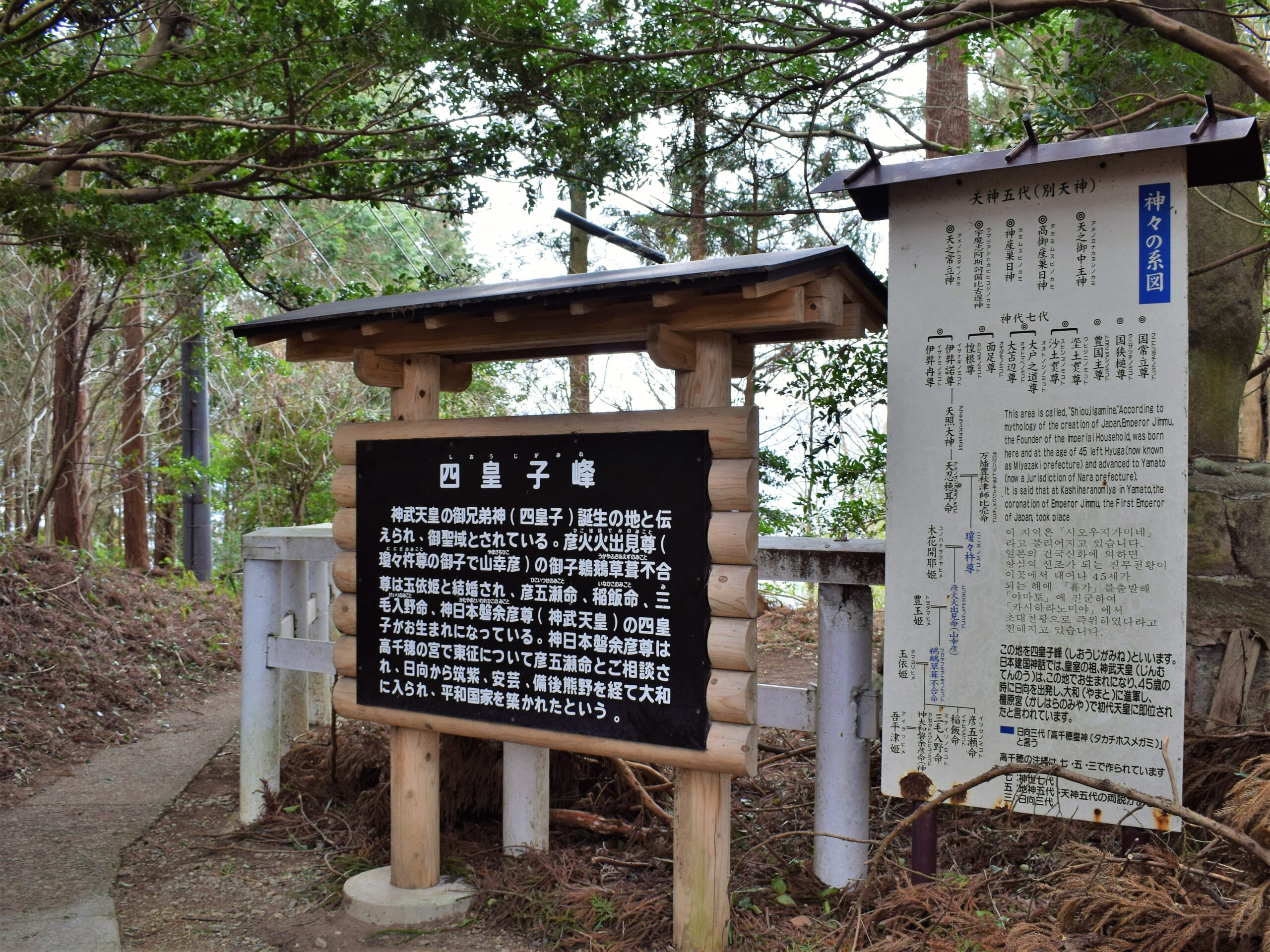
Walk through the torii gate, and in front of you will see a description of Shiojigamine. This alongside a genealogical chart of the gods.
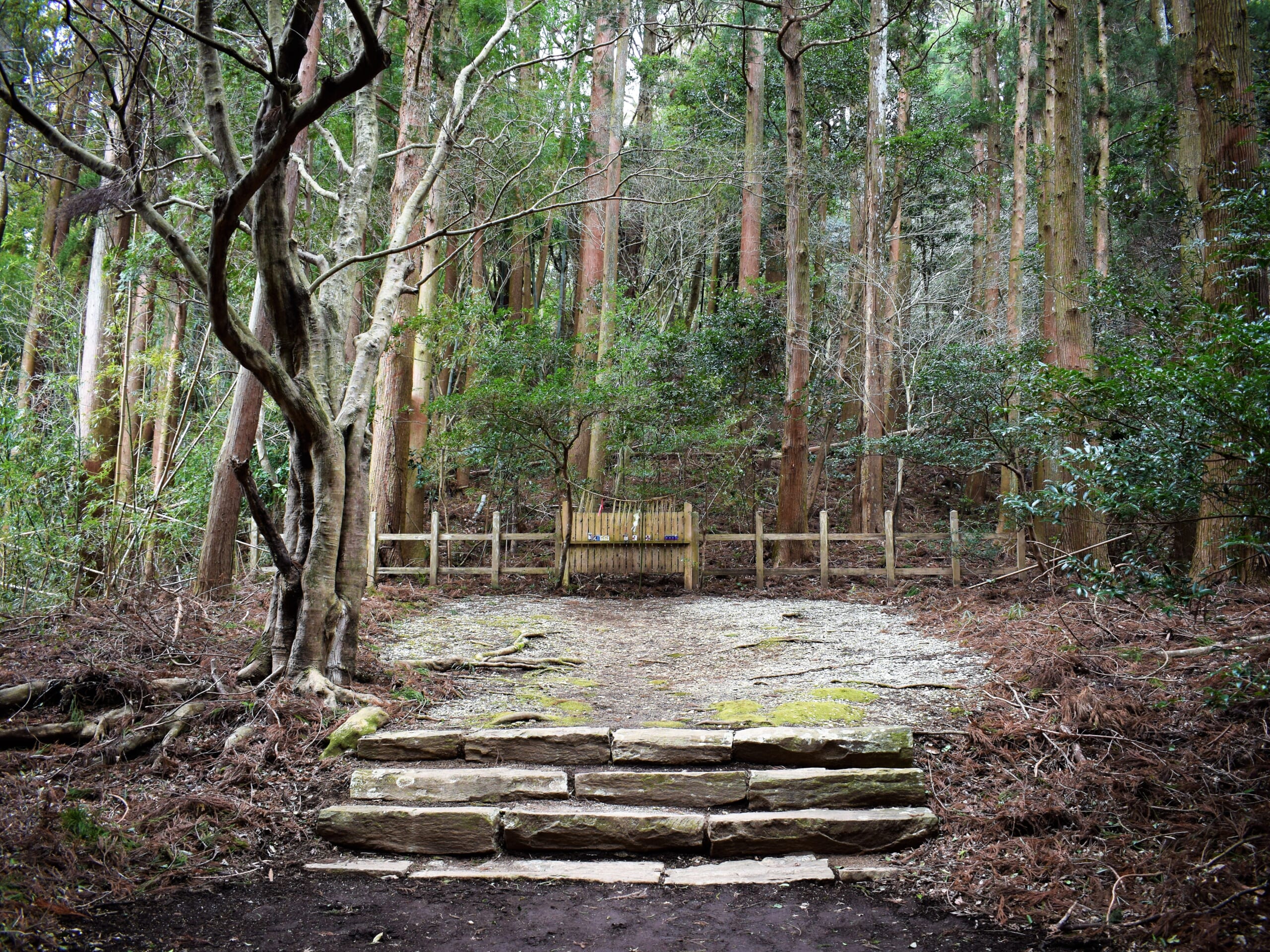
Shiojigamine is said to be the birthplace for the brother gods Itsuse-no-Mikoto, Inahi-no-Mikoto, Mikeiri-no-Mikoto and Kamuyamatoiwarebiko-no-Mikoto, also known as the Four Princes.
Kamuyamatoiwarebiko-no-Mikoto refers to Emperor Jimmu, whom later became the first Emperor of Japan. The power of this place that brought forth the very first emperor, is incredible.
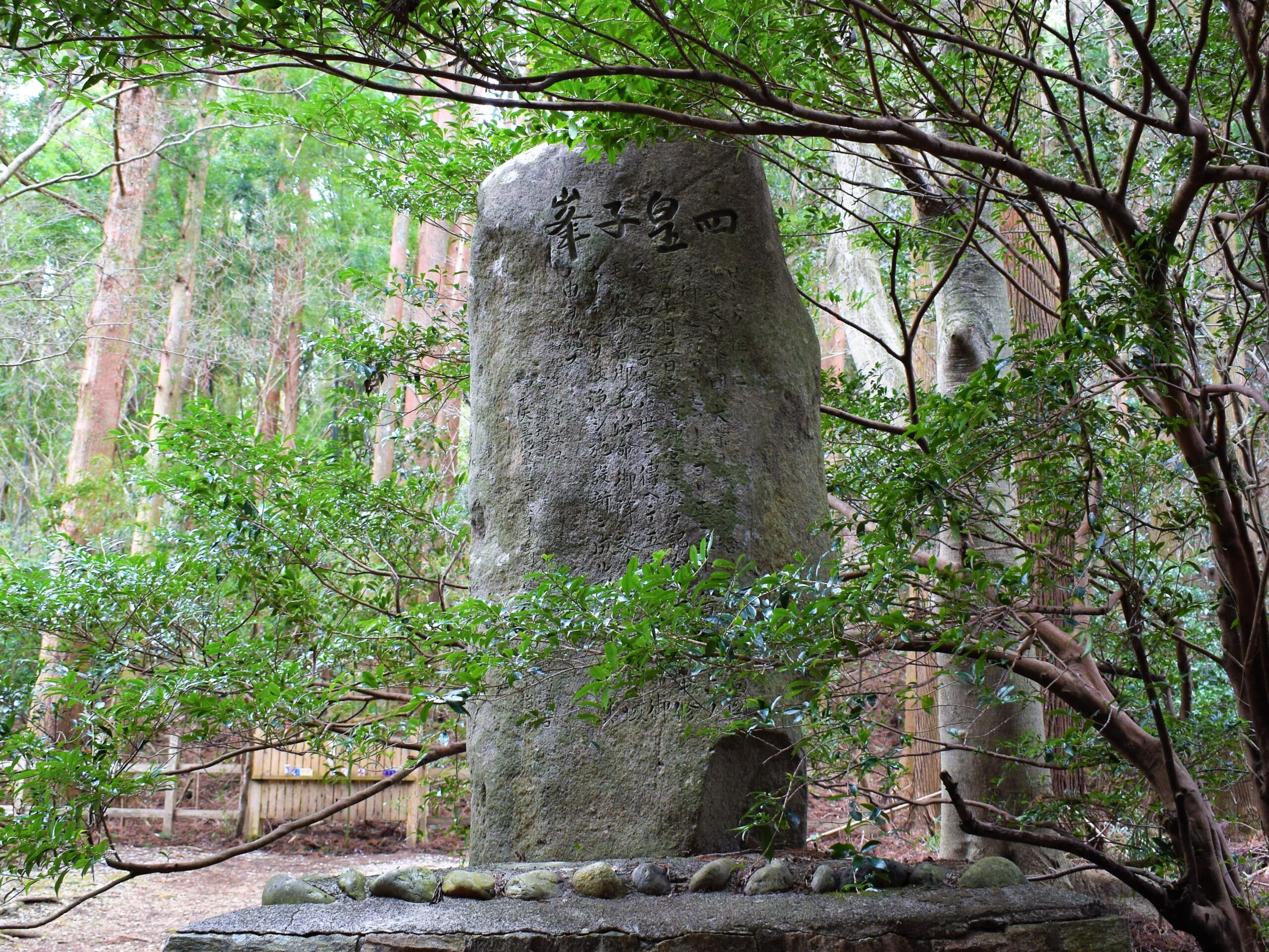
To the west of the Worship Site is a monument erected in 1940 to commemorate the 2,600th anniversary of the Imperial era.
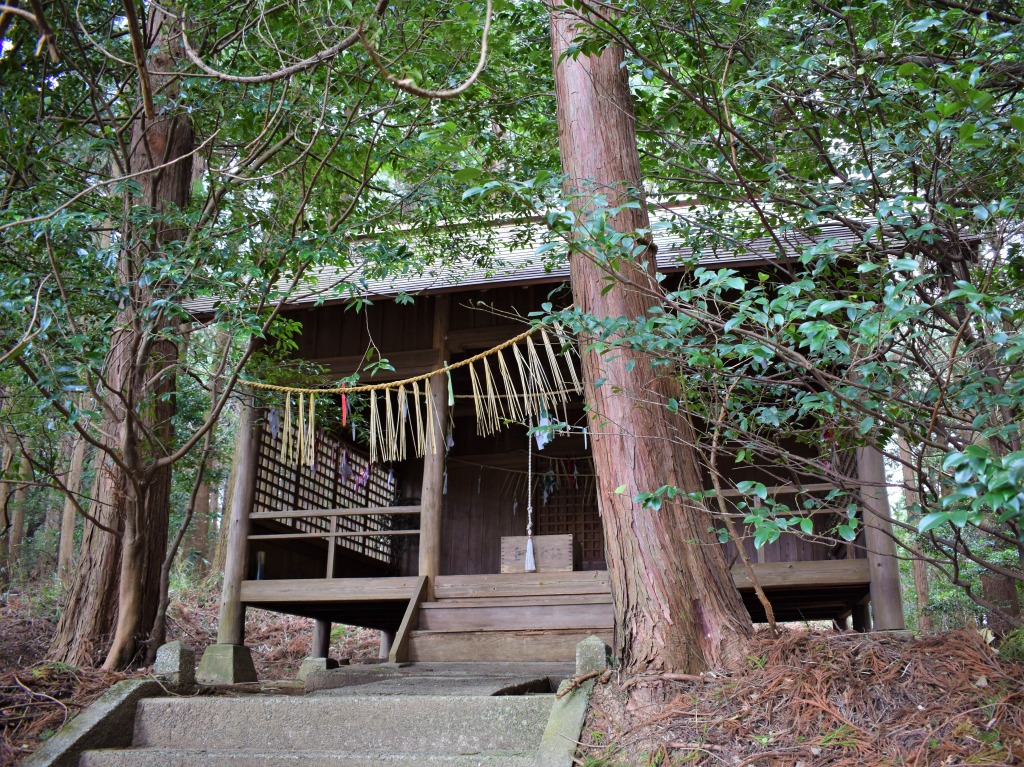
A short distance down from Shiojigamine is Shiojigamine Shrine. Make your greetings here as well.
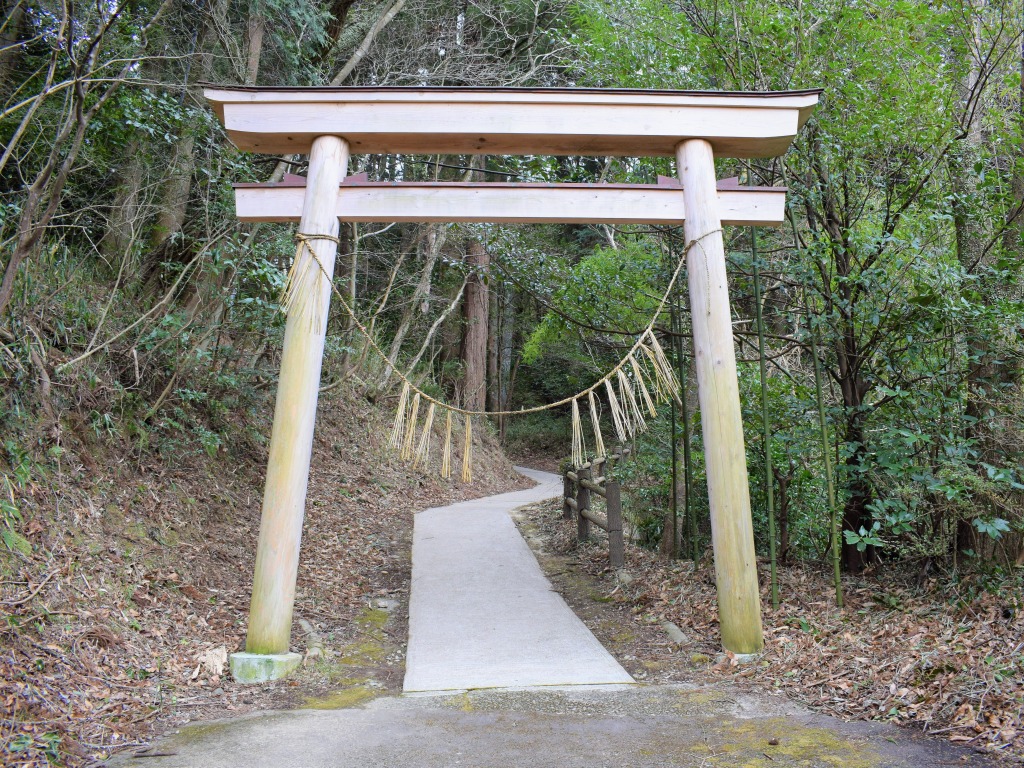
Head down the promenade, and you will see a large torii gate. This is the torii gate of the Shiojigamine Shrine and the end point of the walking course.
Continue down the path towards the prefectural road, the Kushifuru Shrine parking lot, where this tour started will be to your immediate right.
Conclusion
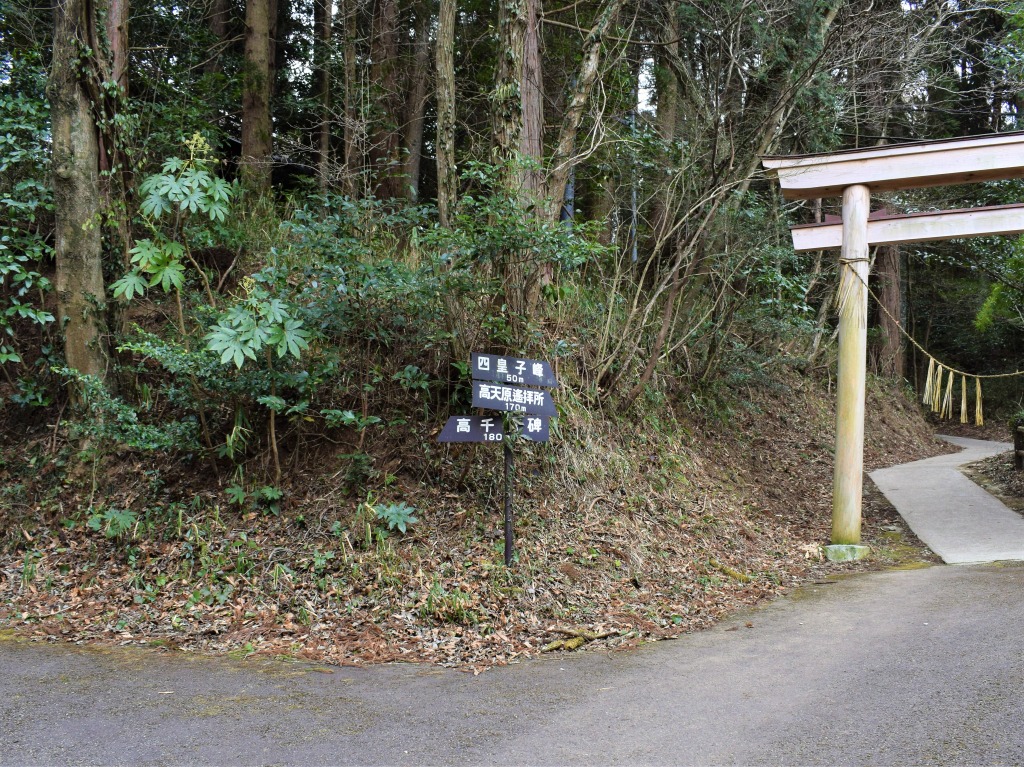
These were the landmarks of the mythological and historical walking course around the site of Tenson Korin.
Some of you may have looked at the information sign near the torii gate at the end point and found yourself confused.
While you can start your walk from the Shiojigamine Shrine side, we recommend you start things off at Kushifuru Shrine.
Relax, take in the richness of the forest, and let your thoughts wander to the land of myths and historical happenings.
 関連の記事
関連の記事
 コンシェルジュからのおすすめ
コンシェルジュからのおすすめ
お客様のご要望に沿ったおすすめの観光情報・宿(ホテル 旅館)・レストラン・居酒屋・カフェ・ショップ等をコンシェルジュスタッフが厳選してご紹介しております。





